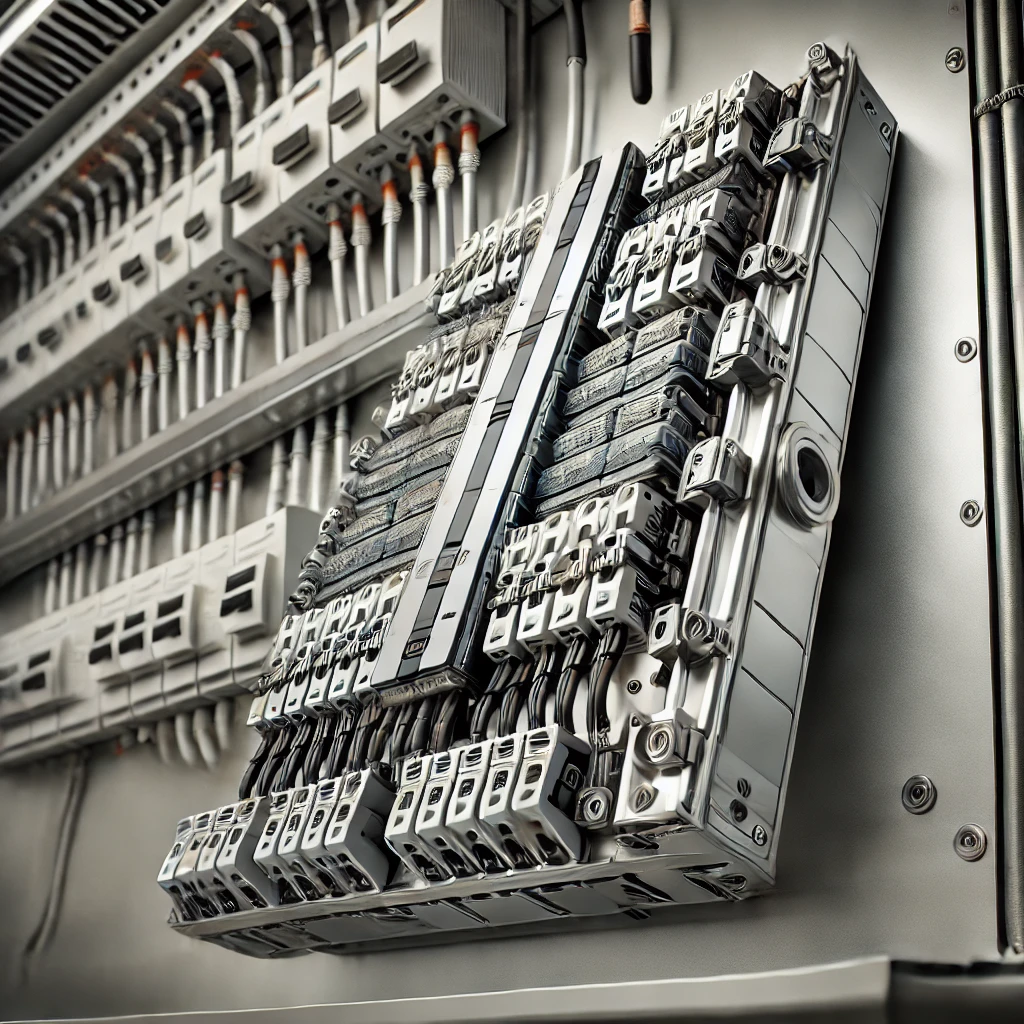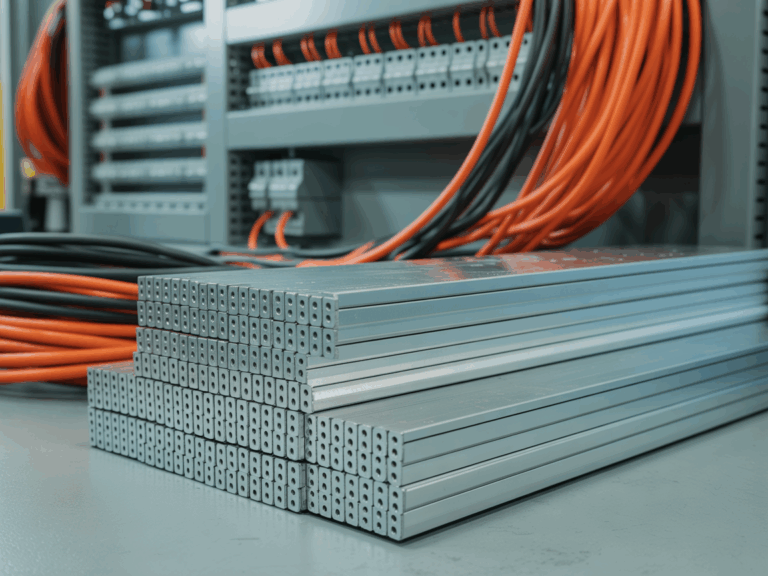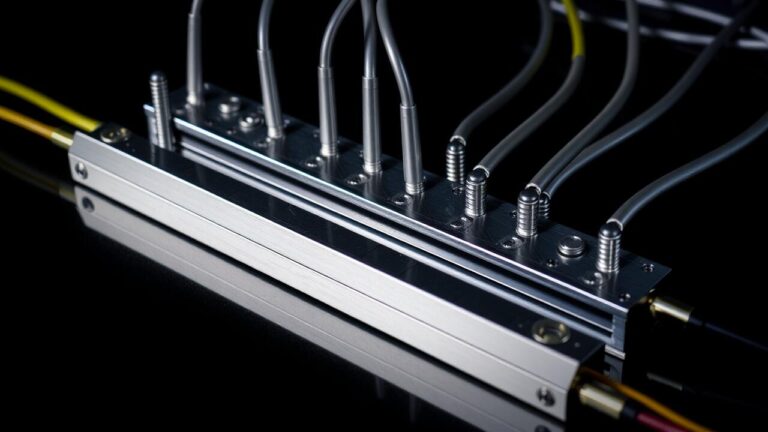Aluminum Busbars: The Essential Component for Efficient Electrical Distribution
Introduction
Aluminum busbars are crucial components in modern electrical distribution systems, offering a cost-effective and efficient solution for conducting electricity in various applications. These metallic strips or bars are designed to carry substantial currents and are widely used in electrical power distribution systems, substations, and industrial settings. In this article, we will explore the benefits, applications, and considerations associated with aluminum busbars, providing valuable insights into their role in electrical engineering.
What are Aluminum Busbars?
H2: Understanding Aluminum Busbars
Aluminum busbars are flat or hollow conductors made primarily from aluminum. They serve as the backbone of electrical power distribution systems by carrying large amounts of current and connecting different electrical components. The primary function of a busbar is to reduce energy loss and increase efficiency in power transmission.
Key Characteristics
- High Conductivity: Aluminum has excellent electrical conductivity, making it an ideal material for busbars.
- Lightweight: Compared to copper, aluminum is significantly lighter, reducing the overall weight of electrical installations.
- Cost-Effective: Aluminum is more affordable than copper, offering significant cost savings for large-scale projects.
- Corrosion Resistance: Aluminum naturally forms an oxide layer that protects it from corrosion, enhancing its durability.
Advantages of Using Aluminum Busbars
Benefits of Aluminum Busbars
Enhanced Efficiency
One of the primary advantages of aluminum busbars is their ability to improve the efficiency of electrical systems. By reducing resistance and energy loss, aluminum busbars ensure optimal power transmission, leading to lower energy costs and improved system performance.
Cost Savings
The use of aluminum busbars can result in substantial cost savings. Not only is aluminum less expensive than copper, but its lightweight nature also reduces transportation and installation costs. Additionally, aluminum busbars require less maintenance, further lowering long-term expenses.
Versatility
Aluminum busbars are highly versatile and can be customized to fit various applications. They are used in a wide range of settings, including power distribution boards, switchgear, transformers, and industrial machinery. This adaptability makes them a popular choice across different industries.
Applications of Aluminum Busbars
Where Are Aluminum Busbars Used?
Electrical Power Distribution
In electrical power distribution systems, aluminum busbars play a critical role in connecting different components and distributing electricity efficiently. They are commonly used in substations, power plants, and large industrial complexes.
Renewable Energy Systems
Aluminum busbars are essential in renewable energy installations such as solar and wind power systems. Their high conductivity and cost-effectiveness make them suitable for carrying the generated power from renewable sources to the grid or storage systems.
Automotive and Aerospace Industries
The lightweight nature of aluminum busbars makes them ideal for use in the automotive and aerospace industries. They are used in electric vehicles, aircraft, and other transportation systems to improve energy efficiency and reduce weight.
Considerations for Using Aluminum Busbars
Factors to Keep in Mind
Thermal Management
Proper thermal management is crucial when using aluminum busbars. Aluminum has a lower melting point than copper, so it’s essential to ensure that the busbars are adequately cooled and insulated to prevent overheating and potential failures.
Mechanical Strength
While aluminum is lightweight and easy to handle, it is not as strong as copper. This means that aluminum busbars need to be carefully designed and supported to withstand mechanical stresses and prevent deformation.
Connection Techniques
The method used to connect aluminum busbars can significantly impact their performance. Appropriate connectors and techniques are important to ensure secure and reliable connections. This may involve using specialized clamps, welding, or other joining methods.
Installation and Maintenance
Best Practices for Installation
Proper Sizing
Ensuring that aluminum busbars are correctly sized for the specific application is vital. Undersized busbars can lead to overheating and energy loss, while oversized busbars may be unnecessarily costly. Accurate calculations based on the expected current load and environmental conditions are essential.
Secure Mounting
Aluminum busbars should be securely mounted to prevent movement and vibration. Proper mounting reduces the risk of mechanical damage and ensures stable electrical connections. Using appropriate supports and fasteners is critical for maintaining the integrity of the installation.
Regular Inspections
Regular inspections and maintenance are necessary to ensure the continued performance of aluminum busbars. Checking for signs of wear, corrosion, and loose connections helps to identify potential issues before they lead to failures. Implementing a routine maintenance schedule can extend the lifespan of the busbars and enhance system reliability.
Conclusion
Aluminum busbars are a vital component in modern electrical distribution systems, offering numerous benefits such as high conductivity, cost-effectiveness, and versatility. Their applications range from power distribution and renewable energy systems to the automotive and aerospace industries. By understanding the advantages, applications, and considerations associated with aluminum busbars, engineers and technicians can optimize their electrical systems for maximum efficiency and reliability.







